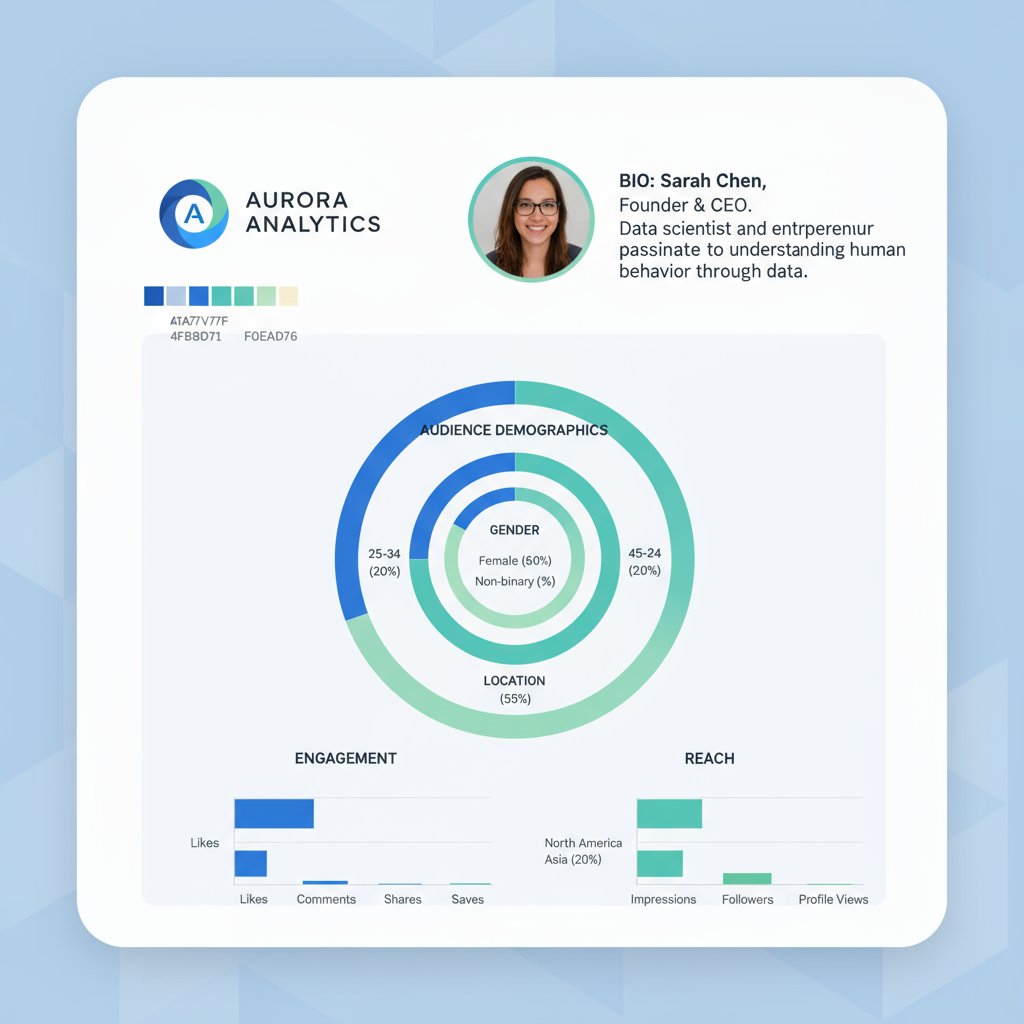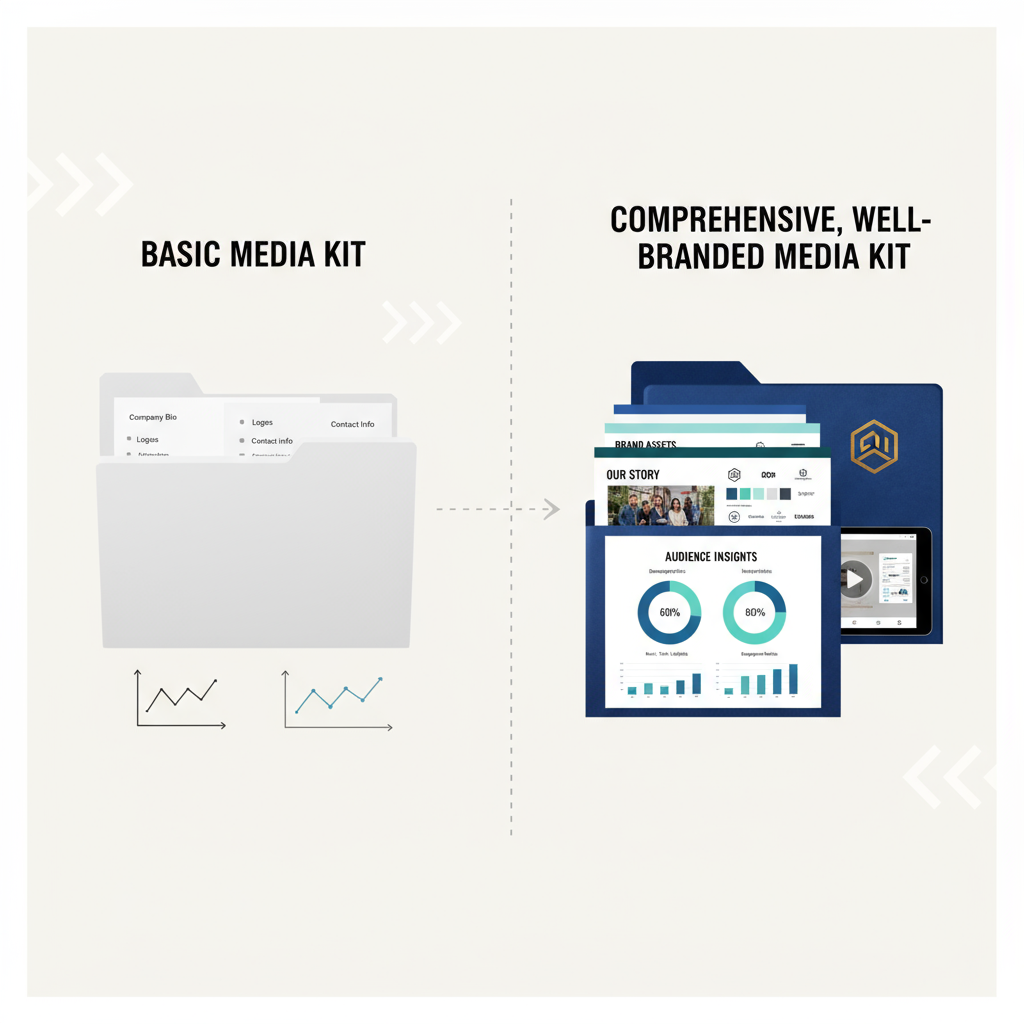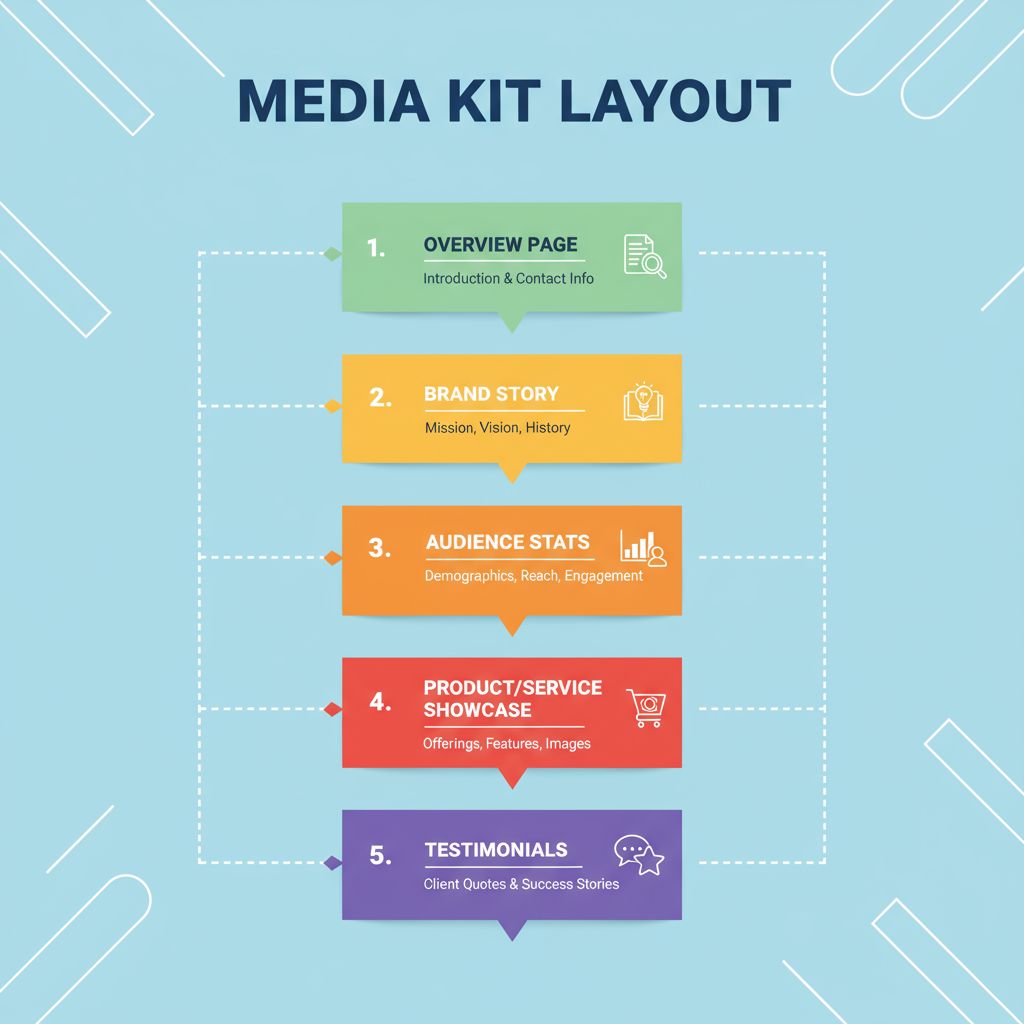What to Include in a Media Kit for Effective Branding
Learn what to include in a media kit to showcase your brand identity, audience data, and offerings for stronger collaborations and branding.

Introduction to Media Kits: What to Include for Maximum Impact
Creating a strong media kit is one of the most effective ways to communicate your brand value to journalists, potential partners, and sponsors. A media kit—sometimes called a press kit—is a streamlined collection of information that showcases who you are, your unique selling points, and your accomplishments. By knowing exactly what to include in a media kit, you can present your business or personal brand in a compelling, professional way that grabs attention quickly in the fast-paced digital landscape.
Think of it as a powerful snapshot of your identity—helping you make the right first impression whether pitching for collaborations, speaking engagements, or brand deals.

---
Why a Media Kit Is Important for Brands and Influencers
In a world of short attention spans, decision-makers need to assess potential partnerships fast. A well-made media kit can help you:
- Define brand identity clearly and consistently.
- Build credibility through professional visuals and accurate data.
- Save time by consolidating key facts in one place.
- Streamline collaboration with clear offerings and guidelines.
For brands and influencers, a thoughtfully designed media kit could be the difference between being overlooked or becoming the obvious choice.
---
Core Components of an Effective Media Kit
Understanding what to include in a media kit ensures you strike the right balance—enough detail to inform, but concise enough to hold interest. Effective media kits typically contain:
- Branding elements (logos, colors, approved fonts).
- Bio and brand story for personal connection.
- Audience demographics and performance metrics.
- Overview of products or services offered.
- Portfolio, case studies, or past collaborations.
- Testimonials or press mentions.
- Contact information and collaboration guidelines.
---
Branding Elements: Logo, Colors, and Visual Identity
The design quality reflects your level of professionalism. Ensure branding elements are consistent and high-resolution:
- Logo files suitable for print and digital use.
- Official color palette with HEX/RGB codes for accuracy.
- Approved typography for headings and body copy.
- Branded imagery or consistent visual motifs.
Your visual identity reinforces recognition, so keep it uniform across the entire media kit.

---
Developing Your Brand Story and Bio
A compelling bio humanizes your brand or personal profile, helping partners connect on a deeper level. When detailing your story:
- Explain your origins and motivation.
- Articulate your mission and values.
- Share achievements or notable milestones.
- Highlight your unique selling proposition.
Storytelling creates an emotional hook that keeps recipients engaged.
---
Presenting Key Audience Data
Performance statistics establish credibility and provide proof of reach and influence. Useful metrics include:
- Social media follower count and engagement.
- Monthly website traffic and session durations.
- Email subscriber list size with open and click-through rates.
- Demographic breakdowns by age, location, or interests.
Present data visually with clear charts and tables:
| Platform | Followers | Engagement Rate | Primary Demographics |
|---|---|---|---|
| 120K | 5.2% | Women 18-34, US/UK | |
| YouTube | 85K subscribers | 4.8% | Mixed, 18-44, Global |
| Website | 50K monthly visitors | N/A | Professionals, 25-40 |
---
Highlighting Products, Services, or Content Offerings
In this section, present your offerings in a clear and appealing way.
For brands:
- Product visuals and descriptions.
- Service categories with benefits.
- Optional pricing or packages.
For influencers:
- Collaboration types (sponsored content, event appearances, reviews).
- Bundled services like long-term campaigns or video content series.

---
Showing Proof of Success with Testimonials and Case Studies
Trust is built on results. Include:
- Case studies with measurable impact (sales growth, engagement boost).
- Testimonials from satisfied clients or partners.
- Logos and snippets of press coverage.
Make these elements visually engaging with bold key results and quotes.
---
Contact Information and Collaboration Guidelines
Once interest is sparked, make outreach simple:
- Include direct contact details (email, phone, website).
- List all relevant social media accounts.
- Outline collaboration guidelines—preferred channels, expected response times, deliverables.
An FAQ section can be helpful for common inquiries.
---
Design and Layout Tips for a Professional Media Kit
The aesthetics of your media kit affect perception. Keep in mind:
- Brand consistency across fonts, colors, and graphics.
- High-quality visuals in PNG or vector formats.
- Concise copy with plenty of white space.
- Clickable elements for websites or social profiles in digital kits.
- Mobile optimization so it views well on all devices.
- Regular updates every 3–6 months to keep it relevant.
---
Bringing It All Together
By prioritizing what to include in a media kit—from branding and storytelling to data and testimonials—you create a resource that communicates your value instantly. A well-designed kit serves as both a marketing asset and a trust builder, making ease of access and visual appeal high priorities.
---
Summary and Next Steps
A successful media kit merges compelling visuals, authentic narrative, and strong data to position you as a desirable collaborator. Invest the effort to perfect yours, include the right elements, and refresh it regularly to reflect growth.
Call to Action: Start building or updating your media kit today—your next big opportunity could depend on it.




